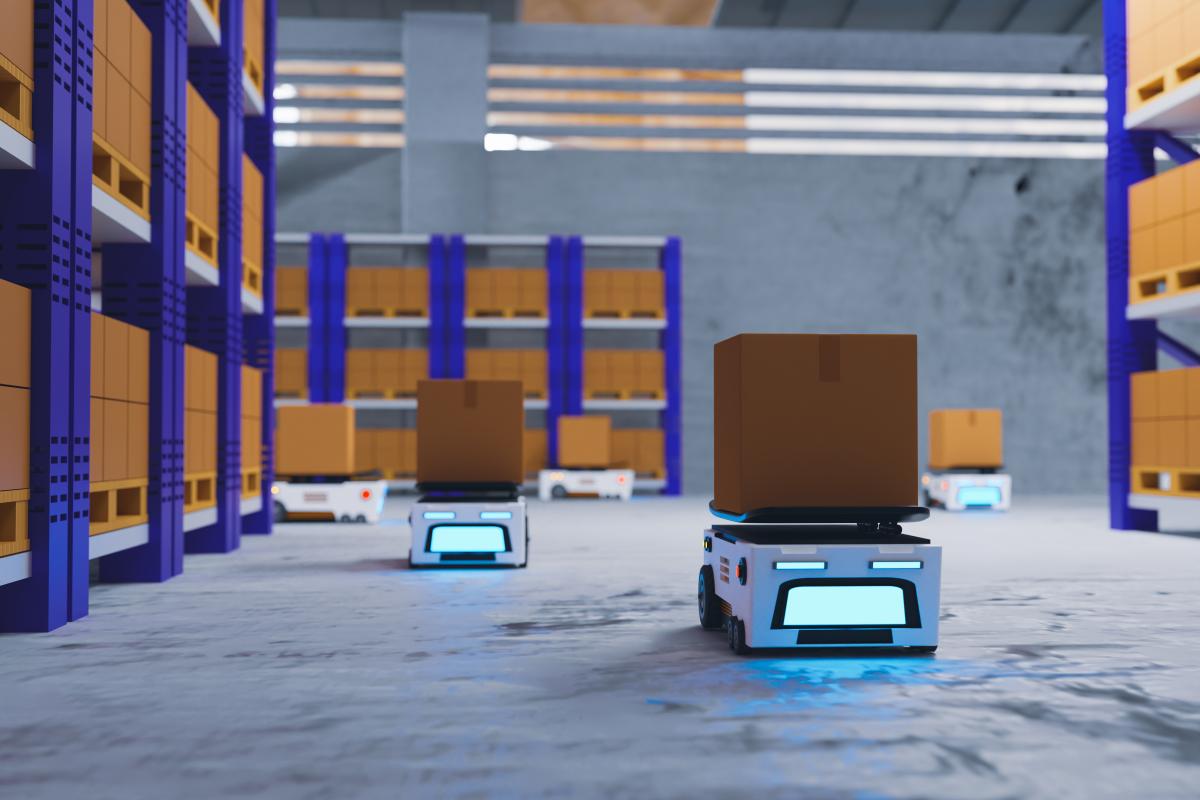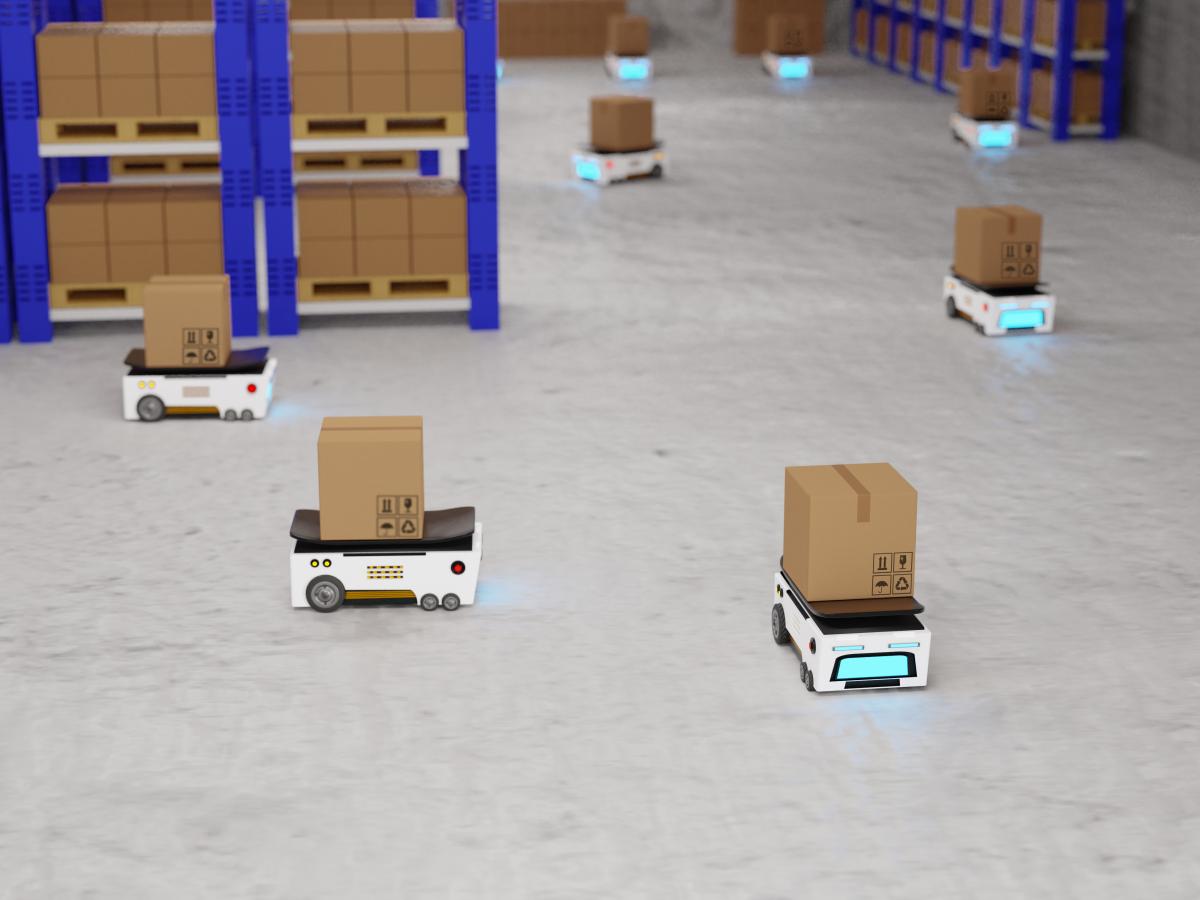
Key Takeaways
- AMRs are versatile and can be used for a variety of tasks in manufacturing, including transporting in-process parts and finished goods, as well as assisting in the production process with accessories like conveyors and robotic arms.
- AMRs can significantly increase productivity and efficiency in order fulfillment operations, eliminating wasted operator walking, searching, and dwell time, and increasing productivity by up to 450%.
- AMRs are used in healthcare settings for tasks like medication delivery and patient monitoring, improving efficiency, reducing the workload of healthcare staff, and enhancing patient safety and care.
- AMRs are utilized in agriculture for tasks like crop monitoring and harvesting, collecting data on crop health and growth, detecting pests, diseases, and irrigation needs, and reducing manual labor while improving crop yield and optimizing resource usage.
Introduction to Autonomous Mobile Robots
As their name suggests, autonomous mobile robotics are robots designed to achieve a level of physical mobility and cognitive autonomy that is similar to humans. AMRs can perceive their physical environment with advanced sensors, make decisions based on those perceptions with analytical software, and, according to those decisions, take actions in the physical world. In the world of consumers, the Roomba, the most popular AMR, uses its mobility and perception to clean the floor of a home or office. In the packaging and manufacturing world, AMRs perform tasks such as inventory management, picking assistance, sortation, and many more. Like the Roomba, AMRs in the packaging and manufacturing industries navigate and comprehend their surroundings without direct human oversight.
Unlike traditional automated guided vehicles, AMRs offer enhanced flexibility in route planning and seamless collaboration with human operators. By integrating AMRs with warehouse control systems, companies can optimize their operations and boost productivity in dynamic environments. In packaging and manufacturing, AMRs automate non-value-added tasks, freeing up human labor for more valuable operations. They efficiently handle inventory transportation, streamline order fulfillment, and minimize labor-intensive processes. AMRs have found applications in various industries, including healthcare, agriculture, retail, and security, augmenting productivity, efficiency, and safety. This article explores the applications and benefits of autonomous mobile robots in packaging and manufacturing systems, showcasing their transformative potential in the industry. AMRs are one of the biggest industrial automation trends this decade, and we are only going to see them grow in popularity.
Types of Autonomous Mobile Robots
From the Roomba to complex AMRs working alongside human coworkers in factories, there are many different types of autonomous mobile robots with even more applications. When it comes to packaging and manufacturing industries, AMRs are divided into categories based on their uses, playing key roles in inventory management, warehouse operations, and material transport. One AMR type is optimized for inventory transport within facilities, providing a more efficient, cost-effective alternative to traditional methods such as forklifts and conveyor systems.
Another AMR type assists in order picking, a time-consuming process, by reducing travel time for pickers and facilitating both conventional and goods-to-person picking. AMRs retrieve products for the picker and deliver specific SKUs to pick stations, boosting productivity. To ensure safe, efficient operation, AMRs are equipped with advanced path planning algorithms and comply with safety standards.
Increasing Efficiency With Autonomous Mobile Robots
Autonomous mobile robots equipped with advanced automation technology enhance operational efficiency in packaging and manufacturing systems by autonomously performing a myriad of tasks, reducing human errors. In manufacturing, AMRs optimize the production process by streamlining the movement of inventory and materials, decreasing the need for manual labor, and minimizing damage or loss. They efficiently navigate complex environments for smooth operations.
In packaging systems, AMRs automate tasks like picking, sorting, and packing, working alongside human operators to boost productivity and cut down processing time. They swiftly and accurately fetch items from inventory for the packaging station, saving time and effort.
The use of AMRs in these systems allows companies to achieve higher efficiency and productivity levels. AMRs can work non-stop, ensuring consistent performance, and can be integrated into existing systems with minimal disruption.
Autonomous Mobile Robots for Packaging Systems

Autonomous mobile robots are vital for boosting efficiency and productivity in packaging systems by automating tasks and streamlining operations through advanced robotics technology. They enhance packaging systems in several ways:
- They automate the picking process with sensors and navigation systems, efficiently transporting cartons from one spot to another, thus reducing manual labor and minimizing errors.
- The integration of conveyor systems allows these robots to transport cartons within the warehouse, eliminating manual carton movement and increasing efficiency and productivity.
- They optimize warehouse operations by automating repetitive tasks, freeing up human workers for more complex operations, thereby improving overall efficiency.
- Equipped with advanced sensors and algorithms, these robots navigate accurately, ensuring correct carton delivery and enhancing the accuracy of packaging operations.
- They significantly increase the efficiency of packaging systems by automating material handling and streamlining operations, operating continuously for faster turnaround times and improved productivity.
Autonomous Mobile Robots for Picking Assistance
Designed to navigate warehouse environments, AMRs assist in the picking process, reducing time spent on walking and searching for items. These robots, equipped with advanced sensors and collaborative abilities, work alongside humans and material-handling equipment.
AMRs offer numerous advantages in manufacturing systems. In traditional picking, they deliver products directly to the picker, eliminating unnecessary movement. In goods-to-person picking, they retrieve and deliver specific SKUs to pick stations, minimizing human intervention and optimizing workflow.
AMRs are especially beneficial in warehouse environments with large quantities of items to be picked and packed. They navigate complex layouts, avoid obstacles, optimize routes, and prevent collisions, ensuring safety.
Their seamless integration into existing warehouse control systems allows AMRs to receive real-time instructions and adapt to changing demands, facilitating efficient task allocation and resource optimization.
Autonomous Mobile Robots for Logistics, E-Commerce, and Warehousing
Autonomous mobile robots are pivotal in optimizing logistics, e-commerce, and warehousing operations by altering how goods are managed and distributed. They efficiently transport, manage, and track inventory within warehouses, eliminating manual labor and reducing time and effort. In the process of order fulfillment, AMRs retrieve items, scan barcodes for identification, and deliver goods to pick stations, thus reducing errors and increasing efficiency. They also provide real-time tracking of inventory and update stock levels. AMRs can adapt to changing warehouse layouts, navigate around obstacles, and adjust routes for optimal efficiency. Some even have robotic arms for tasks like palletizing and packing, enhancing productivity while reducing injury risk.
Autonomous Mobile Robots and Mobile Manipulators for Manufacturing
Mobile manipulators, a combination of AMRs and robotic arms, are bringing significant changes to the manufacturing industry by performing tasks such as product picking, sorting, and packaging.
The use of mobile manipulators in manufacturing has many benefits. They remove the necessity for human labor in repetitive, strenuous tasks, thereby increasing safety. Moreover, AMRs can assist human operators in tasks involving heavy lifting or precision, allowing them to concentrate on more complex, value-added activities like quality control and problem-solving.
AMRs can also adapt to dynamic environments and optimize workflows, providing manufacturers with the flexibility to quickly adjust their production processes in response to market changes.
Autonomous Mobile Robots for Healthcare
Beyond the packaging industry, autonomous mobile robots can significantly enhance healthcare operations. They streamline tasks, such as medication delivery and patient monitoring, in various settings, improving efficiency and patient care. These robots navigate complex environments, efficiently transporting supplies and medication within hospitals, and automating labor-intensive tasks. This reduces staff workload, allowing them to focus on critical duties.
AMRs also facilitate remote patient monitoring, gathering crucial data like temperature, blood pressure, and heart rate. This real-time monitoring system improves healthcare professionals' efficiency and allows for immediate interventions if necessary.
Through operational streamlining and efficiency improvement, these robots facilitate prompt patient care. They ensure swift delivery of medication and supplies, reducing delays. Unlike traditional transportation methods, autonomous robots use minimal floor space, enabling healthcare facilities to better use their space.
Designed to meet rigorous safety standards, these robots come equipped with sensors and advanced navigation systems. This ensures safe operation in busy healthcare environments without endangering patients or staff.
Autonomous Mobile Robots for Agriculture
A wide variety of industries are utilizing AMRs to boost productivity and streamline operations, including the agriculture industry. Autonomous mobile robots have transformed farming by offering efficient solutions for labor-intensive tasks, enhancing crop yield and resource usage optimization. They possess advanced sensors for obstacle detection and navigation without human assistance, allowing them to independently navigate and transfer materials across the farm.
Apart from transporting materials, AMRs also contribute to crop monitoring and harvesting. They have sensors that gather data on crop health, growth, and irrigation needs, enabling early pest and disease detection for prompt protective measures. It’s not a surprise that AMRs have become crucial assets in the agriculture industry.

